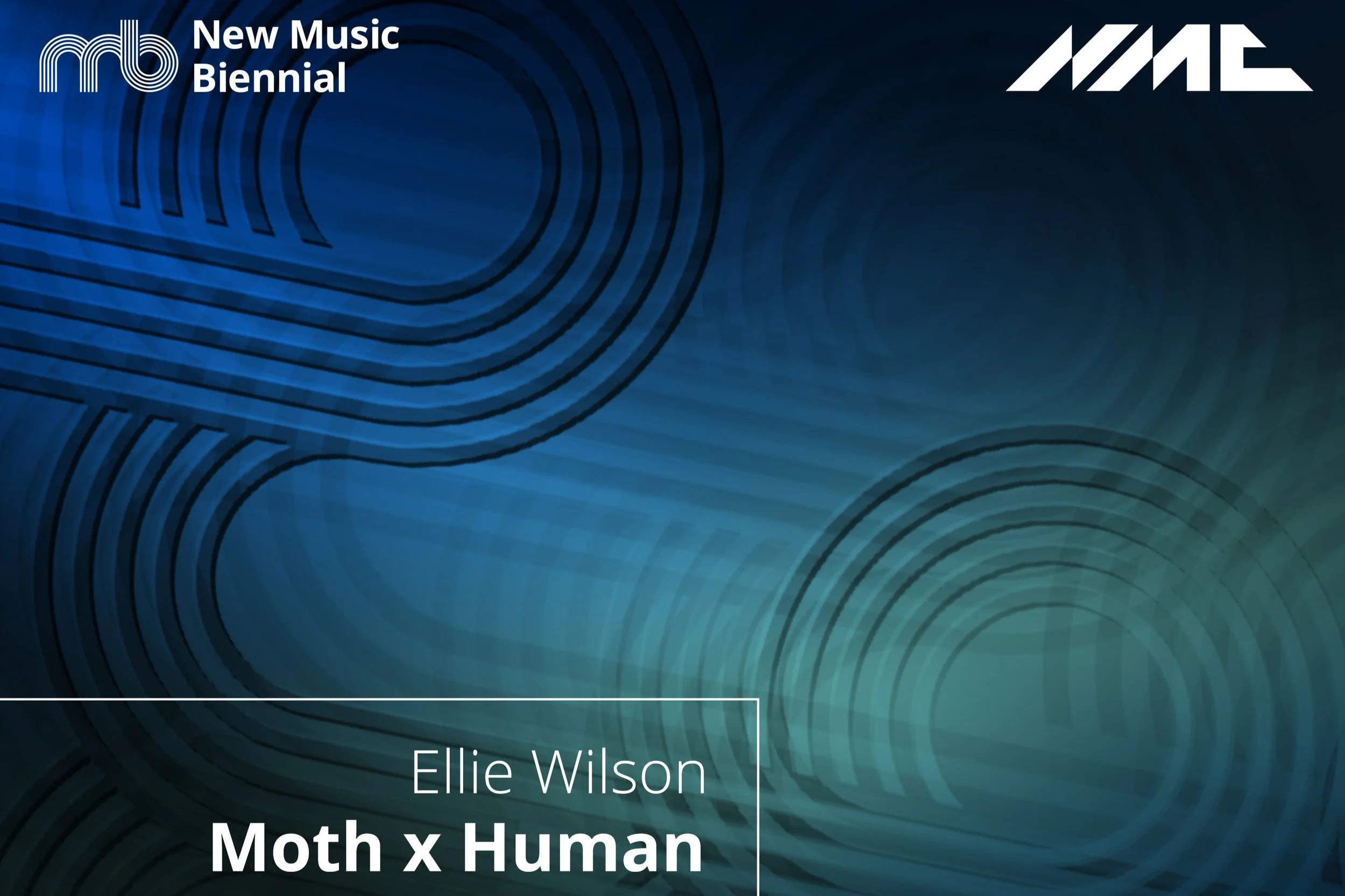‘Ellie Wilson’s haunting Moth x Human turned data about night-time moth activity into a beguiling synthesised fabric’ The Guardian ★★★★
‘So beautiful. Haunting’ CBC Radio
‘A moth symphony … each species has its own distinct musical sound’ Scott Simon, NPR
BBC Radio 3 live recording from PRS Foundation’s New Music Biennial out now on NMC Recordings
Ellie Wilson writes … As biodiversity declines globally, the quiet disappearance of insects often goes unnoticed. I wanted to compose a piece that not only reflected this loss, but also allowed the insects themselves —specifically moths — to help create it, resulting in a sort of interspecies dialogue between moths and humans.
I don’t think I realised quite how much time would be spent staring at spreadsheets before I could start making music. I was introduced to scientists at the UKCEH who use an automated, solar-powered device that records moth activity overnight. It has a light source to attract moths, a camera to photograph them and a computer plus AI to identify the species and timestamp each visit.
I selected a single evening of data and transformed it into music. A custom-built Max/MSP device let me bring this data into Ableton. Each moth’s visit was converted into MIDI, with species assigned a unique pitch or timbre. I condensed real-time monitoring of a whole evening into the 12-minute duration of the work, capturing the ebb and flow of moth activity throughout the night. At some points the moths have created short melodic fragments, and these can be heard later in the piece as repeating motifs in the cello and piano.
The piece sonically represents the impact of biodiversity decline by using data from the same evening but two contrasting locations. It opens with data gathered from Parsonage Downs in Wiltshire, a healthy chalk grassland habitat. Over the course of four hours, 80 different moth species were recorded. The sound world is rich, very active, demonstrating a thriving ecosystem. The closing section of the piece uses data from a monoculture farm in Cambridgeshire where pesticides are used. Here, only 19 moth species were recorded during the same four-hour period and the soundscape is noticeably more sparse and monotonous.
Moth x Human is scored for 2 violins, cello, trombone, piano and analogue synthesizer, but at the heart of the piece is the fixed media track built from the moth data, which plays alongside the live instruments. Most of the writing for the two violins is delicate (marked ‘gossamer – like moth wings’ in the score). They move in fast, whispered exchanged with lots of string crossing that moves from flautando to sul ponticello to bring out a wide range of overtones and timbres. This creates a sort of dreamy, fluttering soundworld. The cello brings contrast and character: playful pizzicati, glissandi, Bartók snaps, and even percussive tapping on the body of the instrument mimic the frantic flutter of a moth caught in a lampshade. I was very lucky to work with The Northern School of Art, who even designed a new module around my project. Fine art, animation, and photography students all created moth inspired artwork that was then 3D animated to make the visuals that are used in the live performance.


